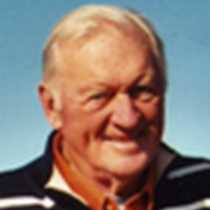Columbia River
Twentieth Century travelers, with a historian’s flair, must exercise a great deal of imagination to clearly see yesterday’s heroes and events. National Geographic Sea Bird’s Lewis & Clark voyage on the Columbia River presents an ideal opportunity to experience the Corps of Discovery as it ran rapids, portaged falls, encountered Native groups, found sources of food, recorded scientific discoveries, and attempted to understand Mr. Jefferson’s dream. With the help of shipboard staff and crew, and the ship’s library, this great 1805-1806 voyage came to life.
Once guests emerge from the tangle of bridges, railroad tracks and rooftops of Portland, Oregon, it is possible to imagine you are on the way east with the Corps in early 1806. Of course the great dams are mute sentries to the modern world, but their crusty walls and looming towers bring guests on deck to ogle the scenery. After granddaddie Bonneville, we pass L-shaped The Dalles Dam, followed by John Day’s 113 foot reach into the sky, then McNary Dam at the Columbia River’s famous crossroads of Wallula Gap. On both shores of this water highway the thinning trees, high desert and basalt monuments remain exactly as Meriwether Lewis and William Clark saw them. The rivers – both Columbia and Snake – are today smoothed by reservoirs, but nature’s colors and rock sculptures are unchanged.
During the morning Staff Historian Junius Rochester’s presentation set the Lewis & Clark scene with an overview of when, why and who participated in the great voyage. In the afternoon, Staff Naturalist Linda Burback’s talk took us into the natural world the Corps accepted as part of Thomas Jefferson’s vision – with a few new surprises which the captains and sergeants carefully recorded in their journals. This leisurely day of cruising in balmy weather allowed guests to ask questions, riffle through reading material, and find their way to the outer decks for a closer look.
The first evening recap featured a slide presentation by our Historian and our Naturalist, in tandem, with accompanying narration, about the role science played during the Lewis & Clark journey. Mr. Jefferson set the pace and provided background, however, the captains, neither of whom had a formal education, carefully recorded animals, plants, fish and fowl in detail. In over 200 instances, they were the first non-Indians to provide colorful and scientifically accurate data about this new world. At dusk, aided by a brilliant sunset, the National Geographic Sea Bird turned into the mouth of Snake River at Sacajawea State Park in anticipation of more Lewis & Clark adventures eastward.




